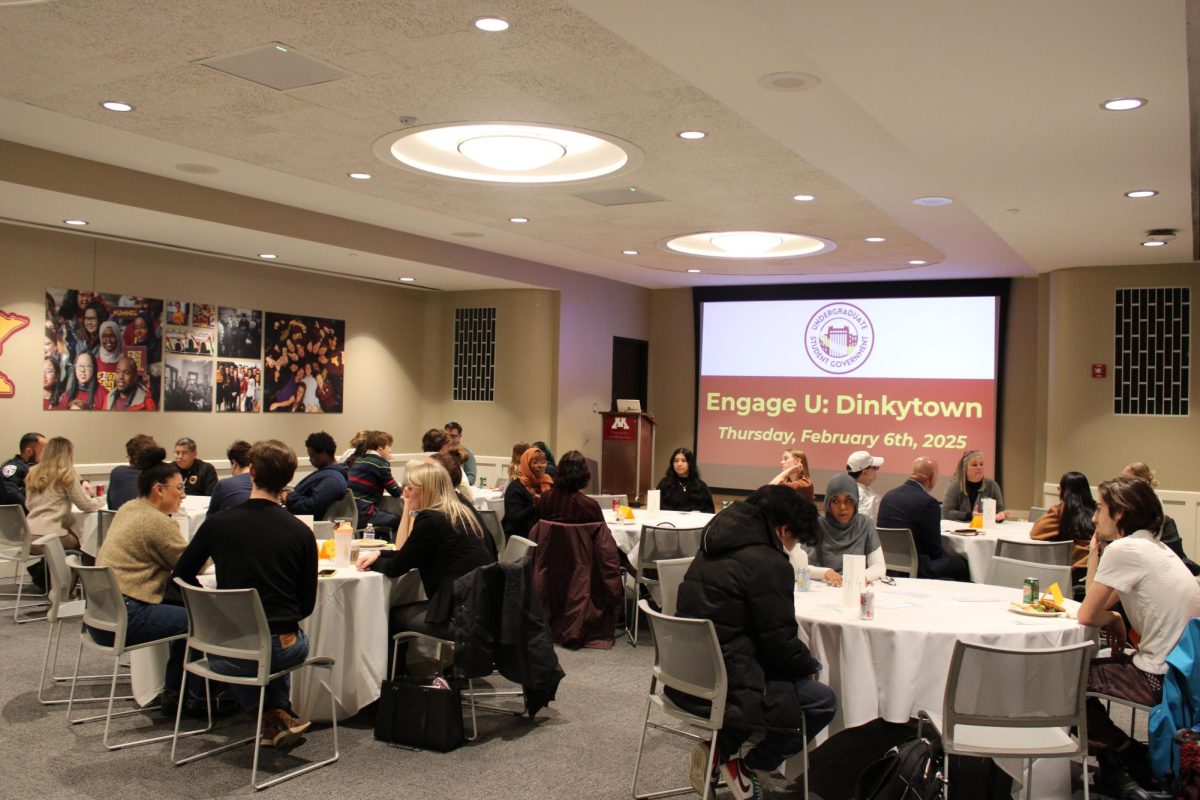With a forward-thinking vision and a commitment to enhancing student engagement, the University of Minnesota’s Office of Orientation & Transition Experiences (OTE) is reshaping the new student experience.
By providing a dynamic and inclusive platform for incoming students to thrive, OTE provides many resources for students throughout their four years at the University.
Lizette Rebolledo, the director of OTE, described their mission as an effort to support every student in their journey from entering the University to successfully completing their degree.
She said the department provides engaging experiences, fostering a sense of community and encouraging students to take charge of their personal growth while making the most of campus resources.
According to Rebolledo, a “New Student Checklist” is launched at the end of March for first-year students and April for transfers after they have confirmed their attendance. Within the checklist, a “Tell Us About Yourself” survey is required for all incoming students to fill out.
“It is a survey that we’ve been administering for over 15 years that asks our students a variety of questions about their high school experience, what they’re thinking college is going to be like and what they’re most excited about and how we can best support them,” Rebolledo said.
The data is then used to help OTE think about how they are putting together content for orientation and is shared with academic advisors to look at before primary advising appointments take place.
Another important resource all new students receive prior to beginning school is the “Gold Book.” According to Rebolledo, the book is revised every year and includes over 100 pages, including 30 pages on-campus resources. The book is also available online for public access.
“When I first came here, [the Gold Book] was useful just to see what to expect at the school,” said Sariya Banday, a first-year student at the University.
Banday is a student in the College of Liberal Arts (CLA) and said the Gold Book was also “extremely” helpful in terms of learning about all the different classes and the actual University itself.
Dhruva Pingale, another first-year student at the University, said it is nice to always have the Gold Book available because it helps him to not forget about available resources.
Upon arriving on campus, students often undergo significant lifestyle shifts, adapting to newfound independence, diverse social interactions and a completely new academic environment.
“Setting time aside for myself, in terms of maintaining a good diet, getting enough sleep or getting enough exercise, have all fallen to the wayside … I only have so many hours in the day, and also, I have homework,” Pingale said.
According to Rebolledo, in an effort to continue supporting students after the welcoming programs, OTE has implemented a division called Student Transition Experiences (STE). STE offers programs, experiences and communications for first-year students, transfer students and second-year students.
“We’ve had a couple study table events that we’re hosting for students. Just last week, we did a ‘paint your own tote’ event where we had over 100 students come and just paint a tote bag,” Rebolledo said.
When describing a couple of the STE events she attended, Banday said they helped give her a lot of information on what to expect as a new student on campus. The events made her feel more comfortable, she added.
STE tries to implement both lighthearted and community-building focused events to help students transition to campus life. They also host events to showcase specific campus resources, according to Rebolledo.
Rebolledo added OTE sends out different newsletters to first-year, second-year and transfer students monthly to make sure students are provided with information about the resources they have on campus.
The goal of the OTE department is to make sure students are always thinking about preventive health versus reactive health, Rebolledo said.
OTE encourages students to be proactive and to think about using the resources available prior to a situation which would require them to do so, she added.
According to Banday, some students are not interested in using resources and feel they have it all figured out.
Students might also be overwhelmed by the size of the University’s campus, which requires them to take a moment to pause and prioritize what they need, according to Rebolledo, since college comes with a huge “time management spider web” that becomes complex.
“If they do need a resource immediately, and they don’t know where to start, we want them to feel comfortable coming to us and for us to direct them where to go,” Rebolledo said.
Banday said coming to campus can be really overwhelming, which is why it is important to reach out to people and remember there are a bunch of easily accessible resources. Pingale emphasized the importance of new students looking into all the resources available to them.
“Even if it’s a quick glance, there’s so much available here,” Pingale said. “There are chances that you’ll find stuff that’s not entirely useful … but then you’ll come across something that’s actually really important to you.”














